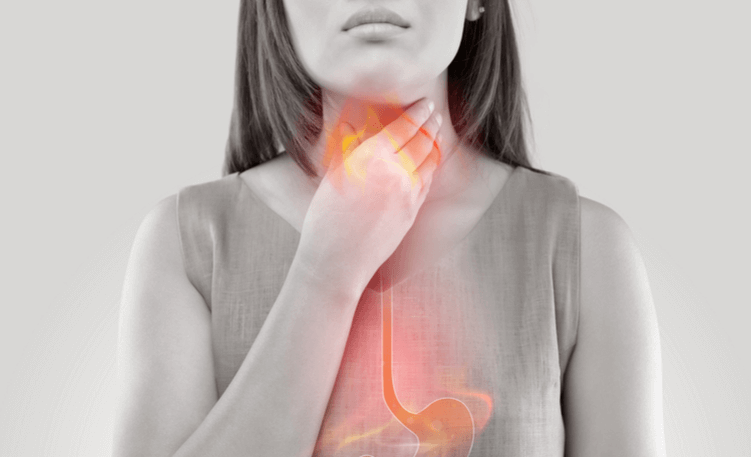7% of the population has symptoms of gastroesophageal reflux daily. GERD occurs when gastric contents pass from the stomach into the esophagus. Learn how to treat it and avoid its complications.
The gastroesophageal reflux, also translated as GERD, comprises the step of gastric contents from the stomach to the esophagus due to the alteration in the mechanisms barrier at that level.
This is not always considered pathological since gastroesophageal reflux also occurs in healthy subjects. The difference is that, under normal circumstances, reflux episodes are sporadic, the contact time of gastric acid with the esophageal mucosa is short, and the resistance of the esophagus to aggressive agents is preserved. When any of these factors are altered, gastroesophageal reflux disease occurs in such a way that pathological reflux is defined as capable of producing symptoms of inflammation of the esophagus.
Gastroesophageal reflux is one of the most common digestive disorders. Studies show that up to 15% of the population have reflux symptoms at least once a week and that around 7% suffer from them daily.
Heartburn (a burning sensation behind the breastbone), especially after eating, or acid regurgitation – the sense of gastric fluids rising through the chest to the mouth – are the most common symptoms in those affected by GERD. However, there may also be other associated manifestations such as sore throat, cough, chest pain with no apparent origin, or difficulty swallowing.
Gastroesophageal reflux disease occurs when the balance between the aggressive and defensive factors of the esophageal mucosa is unbalanced. Therefore, the causes that favor the development of the disease are multiple.
Causes of gastroesophageal reflux
One of the most important and well-known causes of GERD is the alteration at the level of the lower esophageal sphincter, which is a muscular ring that surrounds the esophagus at its junction with the stomach, and remains closed, preventing the contents of the stomach from returning to the esophagus. . When the sphincter is disturbed. There is a decrease in its pressure at rest. It relaxes and does not perform its function well so that the stomach contents reflux. Certain drugs and substances such as alcohol, chocolate, or tobacco favor the relaxation of the sphincter and, therefore, the appearance of reflux.
Another factor that determines the appearance of reflux disease is the alteration of the “esophageal clearance,” that is, the ability of the esophagus to quickly and empty the refluxed gastric contents.
Finally, the alteration of the resistance of the mucosa to withstand aggressive factors can also favor the triggering of this disease and lesions in the esophagus.
On the other hand, some pathologies or situations can increase the chances of suffering from gastroesophageal reflux: from being obese to pregnancy, through hiatal hernia, or suffering from connective tissue disorders (such as scleroderma ).
Symptoms of gastroesophageal reflux
Many times, if there is still no alteration in the esophagus and there is only reflux, it is asymptomatic. However, in most cases, the following symptoms of gastroesophageal reflux may occur :
Heartburn is the most common symptom of gastroesophageal reflux: it consists of a burning sensation or pain in the sternum. It increases after large meals and if the patient lies down.
Regurgitation of sour material in the mouth, difficulty swallowing, or chest pain may also appear. Reflux is a prevalent cause of non-cardiac chest pain, which can sometimes be clinically indistinct from chest pain due to acute myocardial infarction.
Other times, the clinical manifestations of reflux are different and varied: belching, abdominal pain, a feeling of heaviness after meals, nausea, hiccups, etc. However, on other occasions, reflux can manifest as discomfort in the pharynx and larynx, such as aphonia or a foreign body sensation in the throat.
The respiratory problems are also widespread in patients with GERD, and night cough may appear pneumonia, bronchitis, bronchoconstriction, asthma chronic, etc.
In the case of ulcerations in the esophagus mucosa, hemorrhages could also occur.
In children, the primary manifestation of gastroesophageal reflux will be excessive regurgitation of stomach contents into the mouth, and respiratory symptoms will mainly appear. It can also manifest as anemia, growth retardation, or intermittent stiff neck.


Comments are closed.